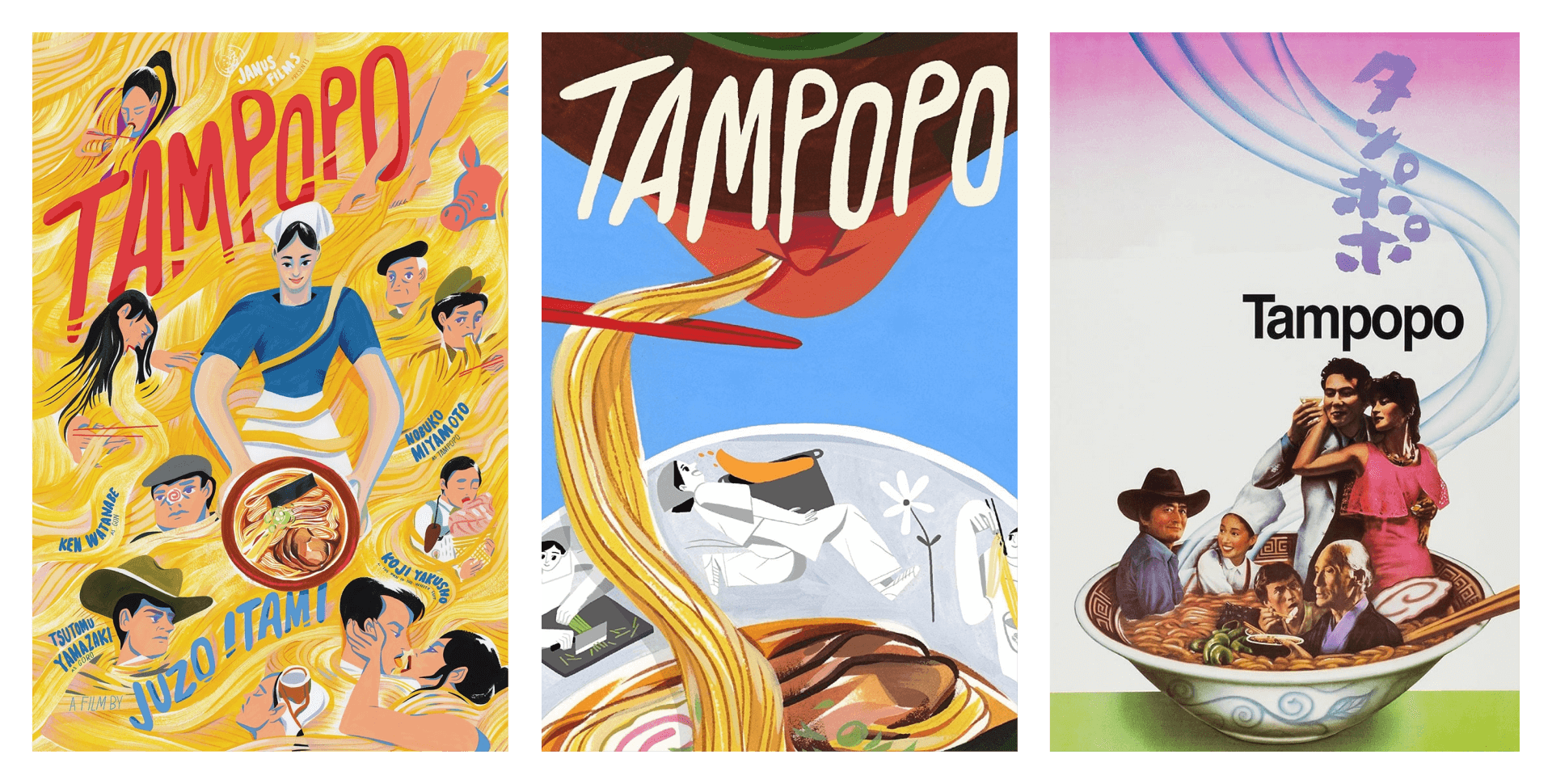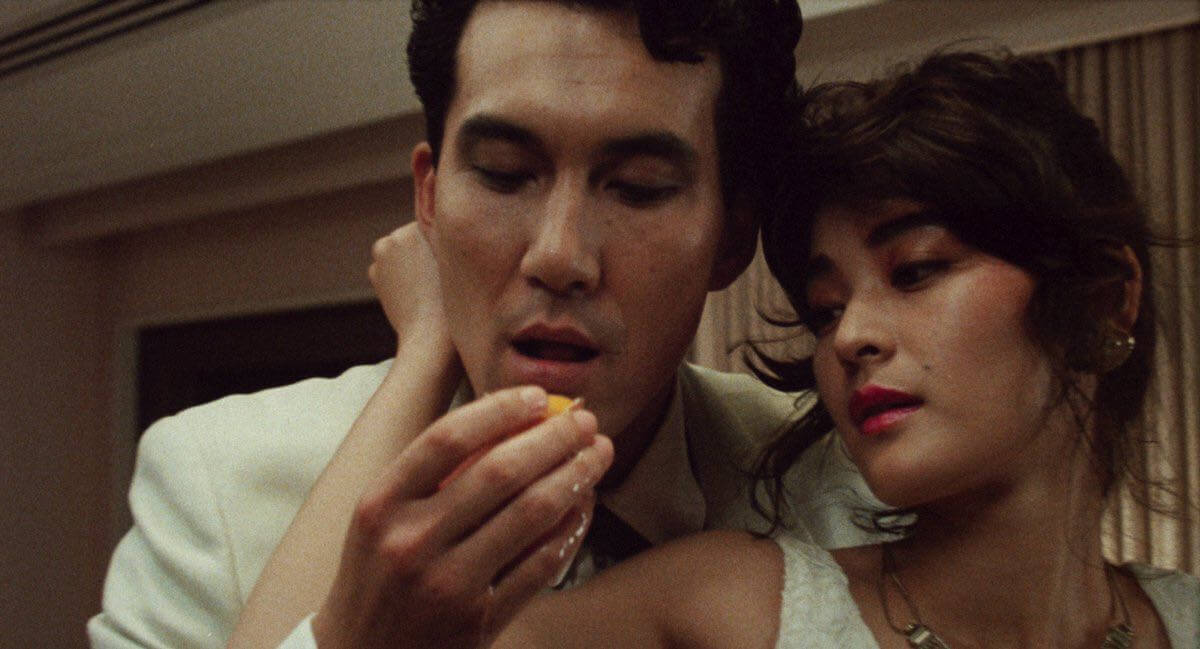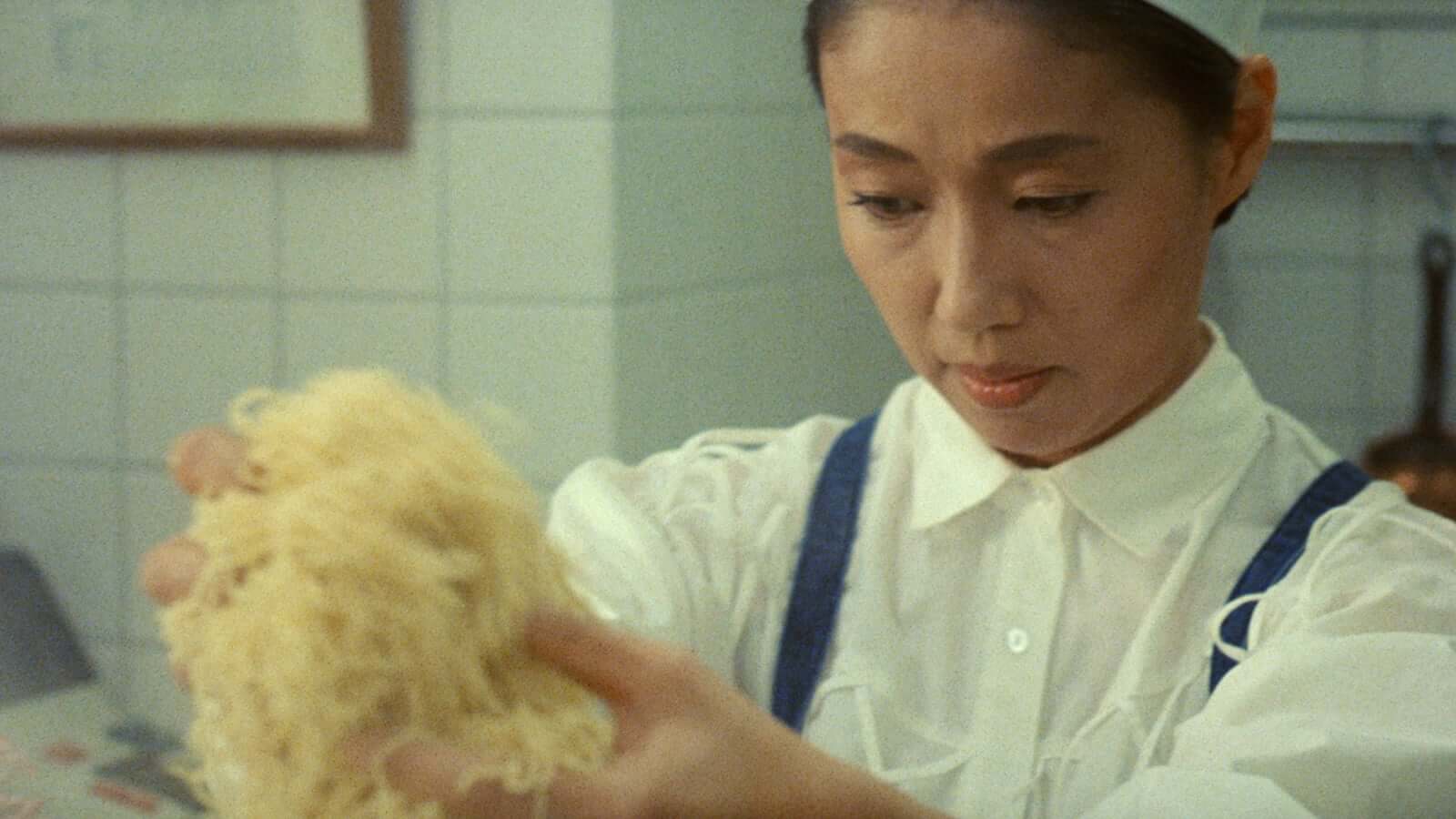
Director Jûzô Itami’s 1985 comedy Tampopo draws parallels between two inherent human needs: the consumption of food and the consummation of relationships between people. This consumer culture is depicted in Tampopo as being symbolically charged with the erotic nature of fine cuisine and the sexual hunger for the flesh. Itami’s cinematography employs these themes throughout various scenes in the film, emphasizing the similarities between the two extremes with distinct camera angles, sound effects, and lighting techniques. The corresponding pleasure of food and sex are explored in scenes of the main plot, sub-plot, and vignettes within Tampopo.

First, Itami implements subtle metaphors with sexual implications in the narrative of the main plot. The central plotline of Tampopo involves a character of the same name who is a single mother and struggling to run her ramen shop. With the help of two truckers experienced in the art of ramen making, she successfully tramples the culinary competition. An intimate relationship between customer and cook is established, with the character of Gorô urging Tampopo to make eye contact with the men who come in for ramen, analyzing their reactions until they eventually culminate to the satisfied, final loud slurp of a finished ramen bowl. A more direct representation of a scene’s cinematic code exemplifying ties between food and sex is when Tampopo peeks at a cook from another competing ramen shop as he prepares his broth. The camera takes on a subjective perspective as Tampopo secretly peers through a hole in the wall, imitating that of a peeping tom surveying a private moment. The camera cuts to Tampopo with a look of entranced awe on her face and the light illuminating her bewildered features as she takes in the forbidden sight of a chef preparing his dish with his secret ingredients. This scene ties in with the ideology of food preparation being a sacred and intimate process, with some instances not appropriate for others to view, much like the kind of erotic activities that take place within bedroom walls.

The sub-plot of Tampopo explicitly entwines the process of making love with the pretense of making a meal with its suggestive imagery. The secondary storyline of the film features a nameless man in a white suit and his lover, who explore different methods of foreplay with an assortment of foods.


Finally, the short vignettes sprinkled throughout Tampopo further illustrate the embedded ties of food and eroticism with expert close-ups and stylistic intensity. One of the short sequences interlaced between the main plot of the film involves a group of young ladies being instructed on the proper fundamentals of table etiquette. As they are instructed by an older woman to not make any sounds while eating spaghetti, their lesson is constantly interrupted by a man seated in a nearby table loudly slurping his noodles. An air of tension is heightened as the women try to maintain their composure and delicately eat their meals. The temptation, however, proves to be too strong and they quickly abandon their ladylike decorum to devour their spaghetti in a ravenous manner. Close-up shots of the young ladies sucking and slurping the noodles as their eyes bulge in a frenzied hunger depict the sensual connotations of the scene. Even the instructor formerly advising the ladies to eat quietly indulges in their hectic feasting, with the camera quickly cutting from one person to another as they engorge themselves with noodles. This vignette embodies the gluttonous appetites people posses not only for certain foods, but for sexual gratification as well, and only until they are able to achieve climactic release (or a clean plate) will they truly be satisfied. The struggle to suppress these natural urges is expressed and fully realized in the cinematic code of this scene.
One notable scene unfolds in the form of a montage wherein the man and his lover season various parts of their bodies with flavorings like salt and lemon juice, then proceed to taste each other. The way the scenes are shot with slow-pacing movement yet rapidly changing shots displays the intricacy of preparing a meal and ultimately savoring the taste of the final product.
Another memorable sequence drawing comparisons with the natural desires of food and sex is when the two lovers exchange a raw egg yolk back and forth in their mouths during a passionate kiss. This scene is presented in one long, continuous shot, entailing a feeling of discomfort and shock among viewers as a close-up of the yolk being transferred between the two open mouths is accompanied by noises of ecstasy. Besides the symbolic nature of the egg being the beginning stages of life and reproduction, the scene encapsulates the idea that food can be implemented as a means of gratification in addition to nourishment. Their appreciation for fine delicacies carries over into the way they satisfy each other sexually.
Jûzô Itami captures the closely-knitted relationship between food and sex in the narrative style and cinematography of his film, Tampopo. The implementation of techniques such as distinct close-ups, sharply edited montages, and suggestive lighting convey the fundamental aesthetic of a consumer-driven narrative. A new question that could be raised after a preliminary viewing of Tampopo includes how the erotic imagery was received by the audience when it was initially released in Japan, and if their cultural ideology conflicted with the explicit scenes in the film.

Another interpretative idea to be considered for future research includes the correlation between themes of a consumerist society in Tampopo and the parallels or distinction of this cinematic code in other Japanese films released in the 1980s. With the overarching motifs featuring cuisine and consummation, Tampopo tantalizes viewers’ senses and grant them a taste of cinematic storytelling with a very unique spin on the phrase, “a feast for the eyes.”
Watch Tampopo Now